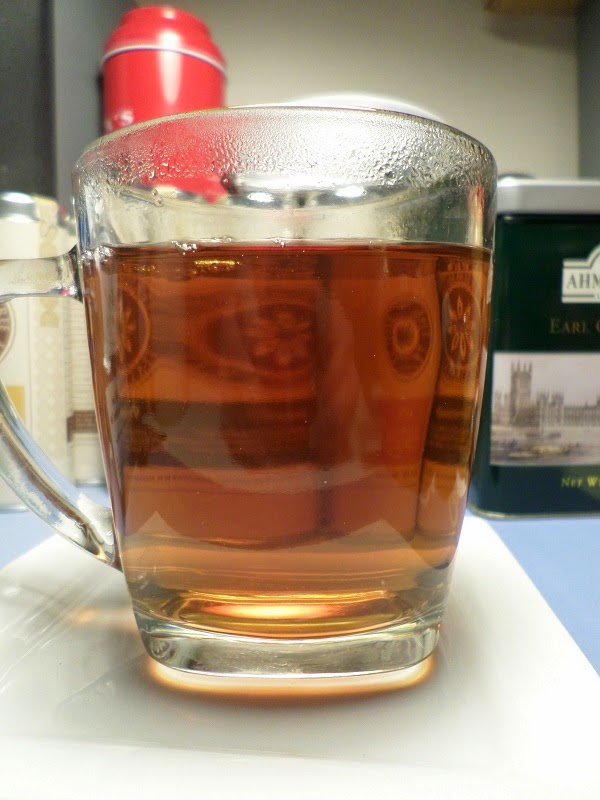A smooth Russian black tea with a sweet raisin taste.
Don't miss a unique opportunity to try a Russian black tea as it was very hard to source and it may not reappear once sold out.
Sample provided by What-Cha Tea Redefined
My Review:
Did you know they grow tea in Russia? I didn't, until recently. This will be a very rare treat for me and this blog. I plan to give this my full undivided attention.
First off, my sample is labeled Krasnodar, which as it turns out, is the city in Russia near where the Dagomys Tea Estate is located. What-Cha's website has this tea listed as Russia Large Leaf. Same tea, slightly different name.
Dagomys plantation is located near Sochi in Russia (winter Olympics XXII), very near the Black Sea. It is far to the north and west of the areas I normally associate with tea growing. It also happens to be one of the northernmost tea growing areas in the world. The trees were developed to be cold resistant. Even so, the plants would almost certainly not survive our Indiana winters without some shelter from the cold. So I have already learned a little about tea, geography, and southern Russian climate. Let's open the bag and see what other surprises it holds.
The resealable aluminum sample bag is once again clearly labeled. I notice the steep time is shown as 4 minutes. That will be tough for me to do. Black teas make me nervous the first time I try them. I should know better by now, but all the years of drinking lesser grocery store teas makes it difficult to trust the tea won't hurt my stomach. What-Cha has not led me astray so far, so I can do this...
Opening the bag and inhaling I get sweet (honey) and malt, along with a grain like note.
Removing a large scoop of leaf - this is really a good looking leaf. I guess I was expecting tiny pieces like how most Assam and Ceylon blacks seem to be produced. Instead this is large pieces reminiscent of a Chinese black (red) tea. The leaf is dark, nearly black, with some cinnamon coloring streaking through the leaf.
Into the press it goes for 4 minutes (I can do this) in 203 F filtered water.
I really need to stop by Goodwill and see if I can find a small secondhand ceramic teapot just for black teas. The press works well but is really not the proper tool for the job. The press is excellent for white and green teas. It cools a little too easily for proper black preparation.
The 4 minute mark is reached (yeah me!) and the result is an orange brew that turns a little more ruby colored as it cools. The aroma is lighter than the dry scent but similarly malt and grain.
Looking at the wet leaf it looks far more twiggy in the picture than it does in person. I was impressed with how much the leaf expanded. This is large pieces of broken leaf. See picture below.
What I expect this to taste like, based on the caricature image I have in my head of Russians drinking tea, is a really strong musclebound cup of bitter tannins that require massive amounts of milk and sugar to calm the cup down to my drinking level. That's what I envisioned. That is not even close to what is in my mug.
This is a delicious and mild cup of black tea. Who knew? My first thought is, this is similar to a Dian Hong, but not really. The smoothness and the total lack of bitterness is similar, along with light malt notes. It is completely different as well, as this does not have the sweet potatoes or cocoa/caramel notes of a Yunnan black.
 |
| Wet Leaf |
Western mug number two was also steeped for 4 minutes. This is still a wonderfully gentle smooth cup of tea, however the flavor is way more pronounced. The raisin note is strong in this one. I am also getting a mushroom and earth flavor late in the sip, along with mineral. This is just completely different than the first mug. It also washes away any reference I have to any other teas.
The growing region really gives this tea its own flavor profile. Similar and accessible compared to old favorites but unique in its own way.
Based on this tea, I look forward to experiencing other teas from Russia. What-Cha states their supply is limited and they are not certain they will be able to secure more, so if experiencing tea from lesser know regions excites you (and it should), don't wait too long.
The next time you brew a cup of tea, I encourage you to consider where on earth your tea actually was grown. I am finding tea makes this world a lot smaller and more connected than I ever imagined.
You can find Russia Large Leaf Dagomys Tea Estate Black Tea here.



This comment has been removed by a blog administrator.
ReplyDelete